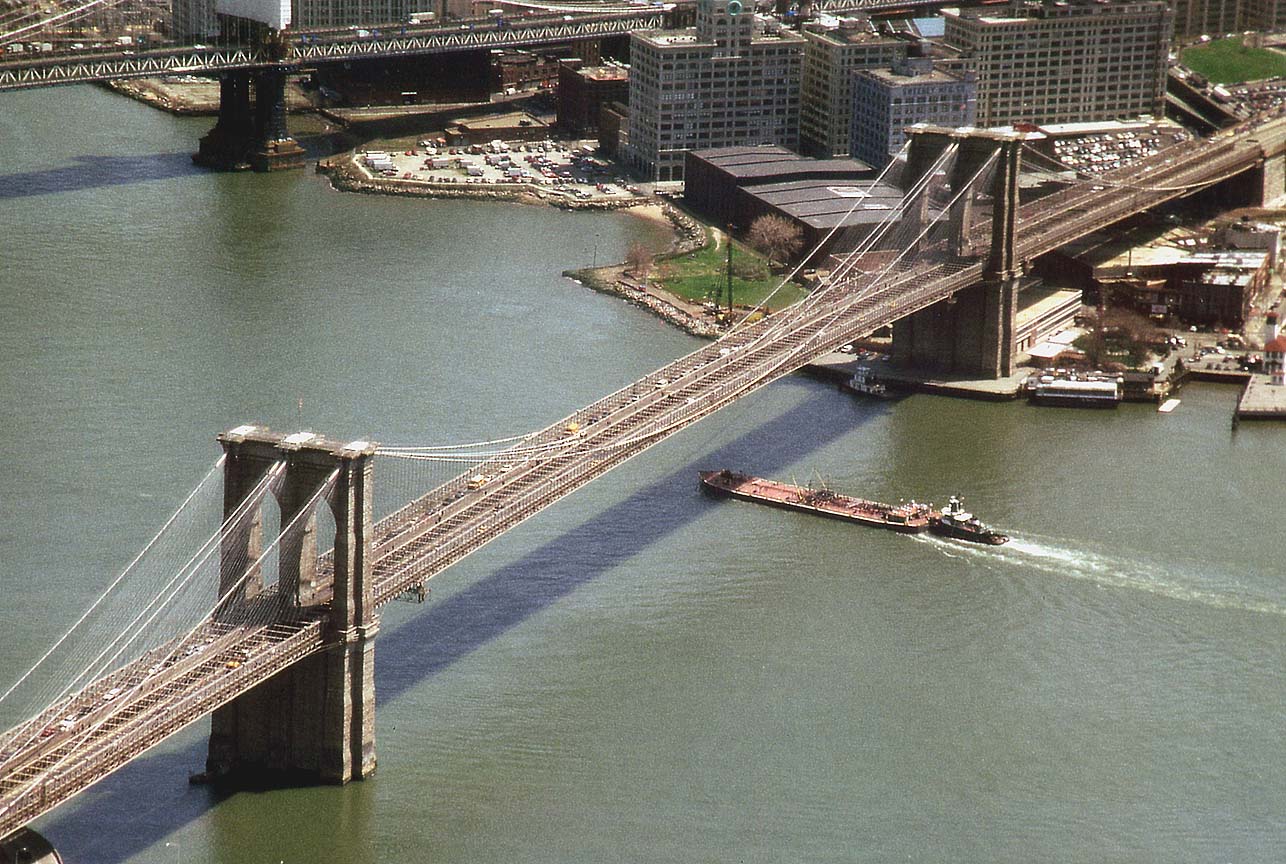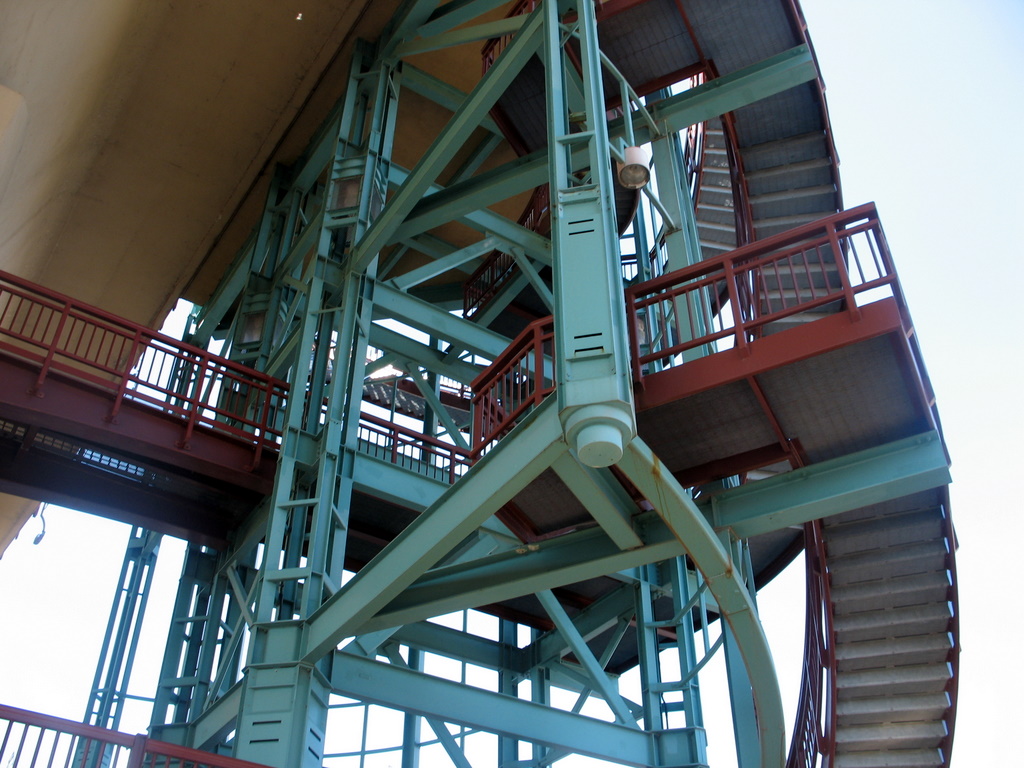Bridge design has gone through a lot of different phases. In ancient Rome, the mere existence of the bridge, given the materials, labor and knowledge of engineering of the day, was a statement in its own right:
The engineering – the simple arch being the state of the load-bearing art back then – was adapted to the materials (wood, stone, iron) and workmanship of the day. It carried weight without actually needing material below the weight itself – which was a major advance.
Over time, as developments in engineering made it possible to add less-utilitarian features – design – to the bridge:
The goal, of course, was to make bridges into statements – about the people who designed, built, and above all authorized and paid for the bridges. “We can bridge the mighty [East/Mississippi/Colorado/James] river – we can do anything!”. The function of the bridge was on full display – the suspension cables, the trusses, the intricate supports that, working with the materials of the day, kept these structures and their passengers up in the air where they belonged.
Then, times changed. As materials improved (steel became cheap and ubiquitous) and architectural tastes morphed (modernism/Bauhaus/what have you intersected with Urban Renewal and the building of the Interstate highway system), the philosophy changed again. The statement wasn’t so much “we can surmount this obstacle” as “this obstacle never existed, Winston“. The bridge, like the obstacle it surmounted, became an unobtrusive, almost unnoticeable, element in the freeway experience. This seemed to be the dominant philosophy from the fifties through the late eighties.
It’s the philosophy that led us to vanilla concoctions like the “Dartmouth Bridge”, carrying I94 over the Mississippi:
From the middle lanes, it’s possible to have no idea you’re on a bridge, much less crossing a stunning expanse of the Mississippi Gorge, at all.
In the nineties, the philosophy changed – again. Thankfully.
I push my conservative penurity aside to note that the Wabasha Bridge – crossing the Mississippi on Wabasha avenue over Raspberry and Harriet islands – was a long-awaited return of style to bridge design.
Yeah, it looks a little bit like something you’d look at at the Walker gallery, or maybe buy at Ikea. The City of Saint Paul website on the bridge notes (in the future tense, on a page written before the bridge was built, and in dire need of update)…:
- There are only 15 other bridges of this type in the United States with spans this long or longer.
- The maximum span length of 397 feet is long enough to clear a football field from goal to goal,
plus the end zones and some stands.- Over 420,000 cubic feet of concrete will be needed. That’s enough concrete to cover a
basketball court 89 feet deep.- The bridge will have over 2.8 million pounds of reinforcing steel embedded in it’s concrete.
- High strength steel strand 0.6 inches in diameter, will be used to compress the concrete. If
laid end to end, the strand would reach for 275 miles, or about from St. Paul to Milwaukee.- The main piers are designed to withstand a barge impact force of 3.2 million pounds.
- The bridge will be supported on 460 vertical steel I-beams driven an average of 60 feet through the soil to bedrock.
- The thickness of the bridge will vary from 8 feet in the middle of the span to 20 feet at the piers, about the height of a two-story house.
Facts, figures – all well and good. But let’s talk aesthetics. The Wabasha Bridge is OK to look at (compared with utilitarian structures like the Fort Road bridge or bland avoidances like Dartmouth or Lexington). It shines the brightest, of course, from the perch on the bridge itself.
Saint Paul has always been a river city. Somewhere along the way (I’m far from the first to observe this) the city turned its back on the river; Saint Paul’s riverfront for the past five decades has been an afterthought – almost a poor, embarassing cousin, to a city that seemed to labor to move its center of gravity up the bluff to the middle of downtown.
The Wabasha Bridge changes that. Not only are you aware of a river – the river – around you as you cross, but you can actually make the river part of your actual life. The notion of reconnecting the city to the river is part of the design. Says Wikipedia (the source of all knowledge these days):
The color scheme of the bridge was also planned to reflect the architectural heritage of St. Paul, with a soft buff color (the color of sandstone) to reflect the colors used in many downtown St. Paul buildings. The color of terracotta roofs in the city was used to select the color of the railings, and the green patina of the St. Paul Cathedral is echoed in the ornamental color of the overlooks.
[I can imagine the howls of alarm on the bridge architects’ part when the Cathedral announced they were getting rid of the patina and refinishing the dome to its original copper, not long after the bridge was completed. Que sera sera.]
Plazas on both sides of the river allow lunch-time strollers to eat and ponder the river below them – watching the barges, the river birds, the activity down on the Harriet Island docks or the barge yards downstream. And – a reprise of the old, 1880s-era bridge it replaced – there’s a stairway to take you down to the river…
…or at least Raspberry Island.
And it’s quite a climb:
And well worth it.
You get the sense that the river isn’t an annoying inconvenience, when you’re on or about the Wabasha Bridge.
It’s my favorite bridge in downtown Saint Paul…





Brooklyn Bridge in da house, woohoo!
No props for the George Washington Bridge?
No props for the George Washington Bridge?
I love that one, too.
Indeed, on further reading, I see that I should find another reason to highlight it – its architect, Cass Gilbert, also designed the Minnesota State Capitol among many other prominent buildings in the Twin Cities.